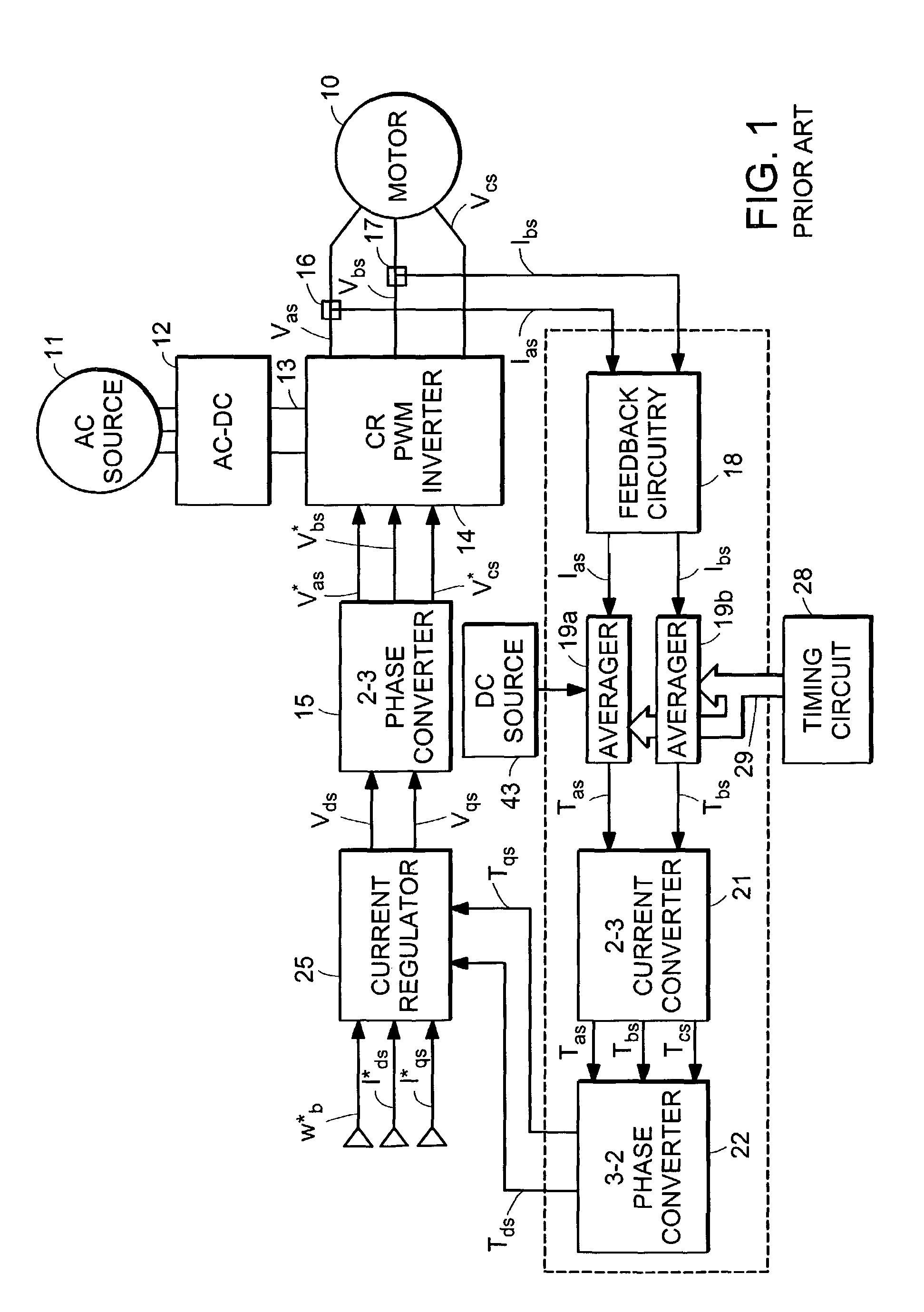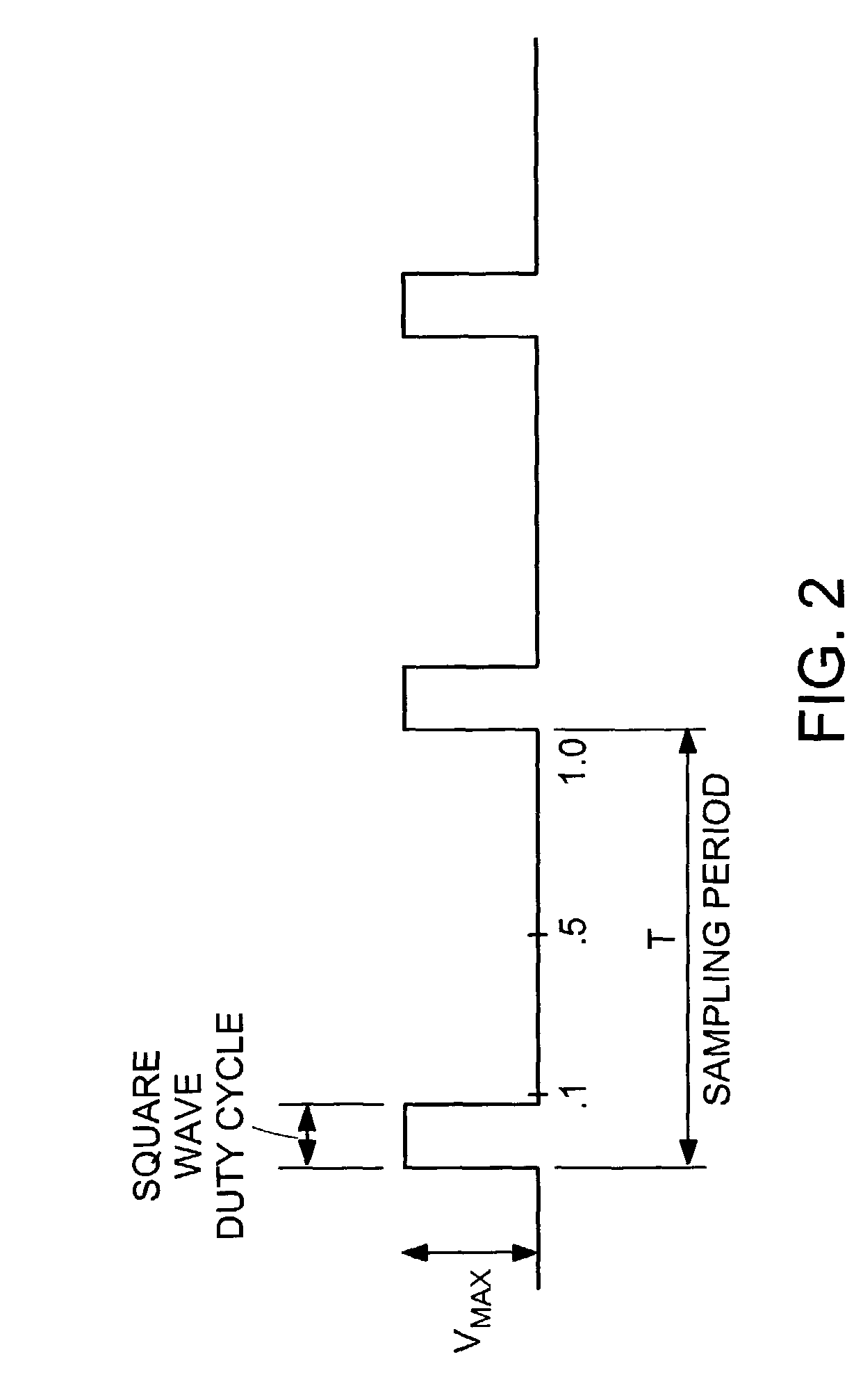Synchronous sampling of PWM waveforms
a waveform and synchronous sampling technology, applied in the field of pulse width modulation, can solve the problems of phase lag, inability to impose a dc or low-frequency waveform directly on a given system, and strict requirements for recovery filters
- Summary
- Abstract
- Description
- Claims
- Application Information
AI Technical Summary
Benefits of technology
Problems solved by technology
Method used
Image
Examples
Embodiment Construction
[0036]Definitions. As used in this description and the accompanying claims, the following terms shall have the meanings indicated, unless the context otherwise requires: a “pulse-width modulated waveform” is a digital representation of an analog signal. The “duty cycle” is the fraction of time for which a pulse waveform is at an “on” level. The remainder of the time, the waveform is at an “off” level. The “switching period” is the period of the PWM waveform. For example, FIG. 2 shows a sampling period in which the value that is created is 10% of the input voltage (Vbus). During the sampling period the signal is on for 1 / 10 of the period. Thus, the duty cycle of the pulse is 1 / 10. This waveform produces an average output voltage that is 10% of the voltage of Vbus.
[0037]FIG. 3 is a circuit 300 for filtering a PWM waveform by synchronously resampling the signal. Synchronous resampling is used in order to capture the actual average voltage of the PWM waveform. In FIG. 3, an intended ave...
PUM
 Login to View More
Login to View More Abstract
Description
Claims
Application Information
 Login to View More
Login to View More - R&D
- Intellectual Property
- Life Sciences
- Materials
- Tech Scout
- Unparalleled Data Quality
- Higher Quality Content
- 60% Fewer Hallucinations
Browse by: Latest US Patents, China's latest patents, Technical Efficacy Thesaurus, Application Domain, Technology Topic, Popular Technical Reports.
© 2025 PatSnap. All rights reserved.Legal|Privacy policy|Modern Slavery Act Transparency Statement|Sitemap|About US| Contact US: help@patsnap.com



